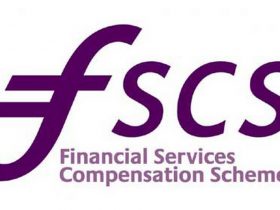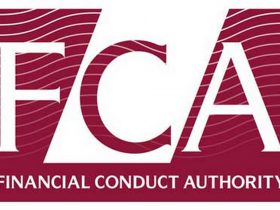What Is a Bank Statement?
A bank statement summarizes all the account’s monthly transactions and is typically sent by the bank to the account holder every month in paper or digital form. Bank statements contain checking and savings account information, such as account numbers and a detailed list of deposits and withdrawals.
Key Takeaways
- A bank statement is a list of all transactions for a bank account over a set period, usually monthly.????
- The statement includes deposits, charges, withdrawals, as well as the beginning and ending balance for the period, along with any interest earned.
- Account holders generally review their bank statements every month to help keep track of expenses and spending, as well as monitor for any fraudulent charges or mistakes.
- On average, paper statements c
- On average, paper statements cost a few dollars per statement, which can add up over the year.
How a Bank Statement Works
A bank issues a bank statement to an account holder that shows the detailed activity in the account. It allows the account holder to see all the transactions processed, typically chronologically.
Most banks send statements to the account holder either monthly or quarterly. Banks and credit unions aren't required to send you a monthly statement unless you made at least one electronic fund transfer that month. Electronic fund transfers include:
- ATM and debit card transactions
- Payments using online bill payment
- Direct deposits
- Any recurring automatic deduction payments
Your bank can usually change the bank account statement cycle date at any time.
Banks must keep records of any deposit of over $100 for at least five years.
Types of Bank Statements
Many banks offer account holders the option of receiving paper or electronic statements, usually via email.
Electronic Bank Statement
An electronic statement or e-statement allows account holders to access statements online for downloading or printing. Many recipients of e-statements still print out their statements at home, preferring to keep a permanent record.
Some banks email statements to customers as an attachment. Bank automatic teller machines (ATMs) may be able to print a summarized version of a bank statement, called a transaction history.
Receiving digital statements is typically free, and opting into digital statements can sometimes spare you monthly account maintenance fees.
Paper Bank Statements
Even with the convenience, value, and accessibility of electronic statements, paper statements aren't likely to go away anytime soon. However, receiving paper bank statements may lead to a fee due to the labor and supplies cost of printing and mailing the statement.
Overall, banks usually charge a few dollars per statement for this service¡ªwhich can add up per year if sent monthly. Credit unions may charge less. Fees will vary by institution.
Paper statement fees may be waived for people over a certain age, such as 65, or minors under a certain age.
Benefits of a Bank Statement?
Bank statements are a great tool to help account holders keep track of their finances, identify errors, and recognize spending habits.
You should verify bank accounts regularly¡ªdaily, weekly, or monthly¡ªto ensure your records match the bank¡¯s. This helps reduce overdraft fees, errors, and fraud.
Account holders can check for discrepancies while reconciling their bank account with the bank statement. Discrepancies must be reported to the bank promptly. Account holders may have as little as 30 days to dispute errors, but timelines vary by account and state. You should keep monthly statements for at least one year.
Requirements for a Bank Statement?
Parts of a bank statement include information about:
- The bank's address and contact information
- Account information
- The statement date
- Total number of days in the statement period, or the period's beginning and ending dates
- Beginning and ending balance of the account
Details of each transaction¡ªnotably the amount, date, and payee¡ªthat took place in the bank account during the period will also be included, such as:
- Deposits
- Withdrawals
- Checks paid
- Any fees or service charges debited from the account
- Interest earned on accounts
- The dollar amount of interest earned during the statement period
For example, for the period Sept. 1 through Sept. 30, a bank statement may show a non-interest-bearing checking account with:
- A beginning balance: $1,050
- Total deposits: $3,000
- Total withdrawals: $1,950
- Service charges: $0
- An ending balance of $2,100
What Is an Official Bank Statement?
An official bank statement is typically sent by the bank to the account holder every month, summarizing all the account's transactions during the month. Bank statements contain bank account information, such as account numbers and a detailed list of deposits and withdrawals.?
How Can I Get a Bank Statement?
Typically, you can access your latest bank statements on your financial institution's website. Otherwise, you can request a monthly paper statement be delivered to your home.
What Is the Difference Between a Bank Statement and a Transaction History?
A?transaction history?displays all bank account transactions for a set period you choose. Typically, a bank statement only covers one month of transactions and may leave recent or pending transactions out.
Can Anyone Check My Bank Statement?
No one can check your bank statement without your permission. Unless you give out your account number, banks do not release information regarding your bank statement to unknown third parties without your consent.
The Bottom Line
Bank statements allow you to ensure transactions and deposits align with your expectations and record-keeping. Reviewing your bank statements, you may find that you're paying for subscriptions you don't need or want, or you may find you were charged twice for the same transaction.
You can also review how much interest you're earning in your bank account as a percentage and a dollar amount and whether you might want to switch to a higher-earning checking or savings account. However, be aware of fees for mailed paper statements that can add up over the year.













Leave a Reply